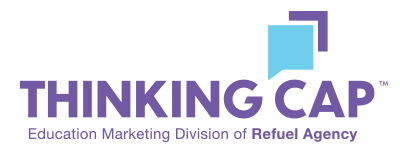Higher education was already experiencing growing pains before the pandemic descended in March. Really, since the 2008 recession, higher education has been faced with challenges like tuition dependence, dwindling state dollars, falling birthrates, a reduced middle class, programs misaligned with student demographics, decreases in donor income, and inefficient facilities (to name a few). But the pandemic acted as a catalyst towards enormous change in our world — prompting the necessity of waking up to higher education trends and determining a long-term strategy for higher education leaders.
Now there is no returning to the way things used to be. Higher education only has two choices: innovate to meet the needs of an entirely new group of students and embrace the future of higher education, or get left behind by clinging to an outdated model for higher education.
Higher education is changing. Here are three pivots for smart enrollment marketers to implement a successful higher ed enrollment strategy — based on trends in higher education we’re seeing.

Read next: The Ultimate Guide to Marketing to Gen Z
The world has been restructured — permanently
The pandemic has led to the extinction of things everyone said were absolutely necessary — the daily commute, the physical office, and yes, in-person education. It has turned systems on its head, illuminated aspects of society we take for granted, and restructured the very nature of our everyday lives. And the thing is, many of these changes will be permanent.
“If there is any leader in the country who thinks it is going to go back to where it was a year ago, they are lying to themselves,” said Terri E. Givens, chief executive officer of the Center for Higher Education Leadership and former provost at Menlo College.
The pandemic acted as a catalyst for trends we already saw coming — removing all barriers and catapulting us forward into a reality that could have otherwise taken decades. We’re in a different place now, and the sooner that leaders can analyze the new current market and innovate higher education’s product-market fit, the more successful higher education will be.

What happens when we’re confronted with a virus that is incompatible with our current model of residential higher education? And perhaps even more pressing — what else has been incompatible with this current model that we’ve been ignoring and can now address?
Even though changes to the world’s structure present plenty of challenges for higher education, many of these changes have the potential to be positive and transformative. So how can you work with, instead of against, our new normal? While being disruptive and painful, crises also nurture the emergence of great common purpose, solidarity, creativity, and innovation. Here are three components for a successful strategy moving forward:
Flexibility
In a new normal full of complete uncertainty, your most winning value proposition is flexibility. It’s something that your prospective undergrad, graduate, professional, and transfer students are all looking for equally for different reasons as they navigate constantly shifting futures.
We can see the shifts towards more flexible options in higher education already. This year, many institutions extended the traditional May 1 admissions deadline to June 1 or beyond. Exam providers rescheduled SAT and ACT dates. Over 30 institutions announced test-optional and similar admissions standards for students enrolling in fall 2021, a trend that was emerging before the pandemic began.
And we also see these shifts rapidly occurring in the world of work, which higher education can absolutely take clues from. What people look for in an employer is often the same set of qualities they look for in a university. And we are seeing companies nationwide adopting remote-by-default models that prioritizes the flexibility, safety, and comfort of their employees.
Your students not only have busy lives, but now they have very uncertain lives. They need to trust that higher education can fit well into their lives, and your institution can ensure that they are taken care of as a whole student.
Read next: Little-Known Graduate Recruitment Strategies for 2020
Practical learning outcomes
Your undergrad students are members of the Gen Z generation — an overwhelmingly practical generation of students. Many of these prospective students have been living with their parents for the duration of the pandemic, observing financial struggles, and are questioning whether paying full tuition for online education is the best move for them right now. Many are opting for a gap year, or attending community colleges close to home.
But even your older graduate, transfer, and professional prospective students are valuing practicality more than ever. This group of prospective students is looking to further their education almost exclusively to advance in their careers. But the economy is uncertain, and many of these students are now faced with full-time caregiving responsibilities in addition to part-time or full-time work.
Both of these groups of students are prioritizing the practicality of their decisions and analyzing exactly what they want to get out of furthering their education. They want to know that pursuing higher education will make sense financially, and will pay off by directly helping them meet their goals.
Read next: Fall Is Here. Here’s How In-Person Higher Ed Classes Are Going
Data
One effect of admissions leeway is the ability for schools to poach committed students — a practice that was once considered taboo. Schools can no longer count on their summer budget calculations and instead, have to focus on aggressive recruitment and prospective student retention through boosted financial aid packages or other methods.
This is just one example of how admissions has changed — and how data can help. A positive shift that COVID has enacted has been the wealth of data now available to colleges that may not have been available before, such as participation and performance metrics, so that you can analyze campaign performance with ease.
The Association for Institutional Research, EDUCAUSE, and the National Association of College and University Business Officers said that:
“We strongly believe that using data to better understand our students and our own operations paves the way to developing new, innovative approaches for improved student recruiting, better student outcomes, greater institutional efficiency and cost-containment, and much more… Data is an institutional strategic asset and should be used as such.”
Strong data is your greatest ally.
What sets you apart?

Your product has been drastically changed by the pandemic. No longer can you market your student life, your organizations, your faculty’s office hours, your facilities, your athletics, or your events. So with the absence of a physical campus — what sets you apart?
We would argue that it’s a combination of your compassion and your innovation. Students want to trust that they will get what they pay for, and that your institution is acting in their best interest.
Are you ready to increase your student enrollment? We provide student data targeting and state-of-the-art campaign analytics to ensure your campaign’s success. In 2021 — you can’t have less.




